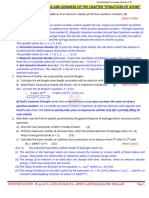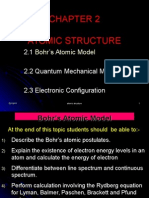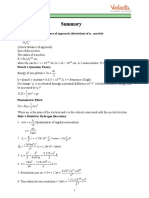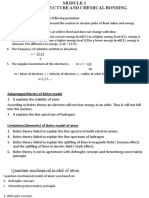0% found this document useful (0 votes)
22 views2 pagesAtomic Structure Formulas
The document outlines important formulas related to atomic structure, including calculations for moles, subatomic particles, electromagnetic radiation, and the photoelectric effect. It also covers Bohr's model of the atom, wave-particle duality, the Heisenberg uncertainty principle, quantum numbers, and the spectral series for hydrogen. Each section provides key equations and constants necessary for understanding atomic behavior and properties.
Uploaded by
sapanayel123Copyright
© © All Rights Reserved
We take content rights seriously. If you suspect this is your content, claim it here.
Available Formats
Download as PDF, TXT or read online on Scribd
0% found this document useful (0 votes)
22 views2 pagesAtomic Structure Formulas
The document outlines important formulas related to atomic structure, including calculations for moles, subatomic particles, electromagnetic radiation, and the photoelectric effect. It also covers Bohr's model of the atom, wave-particle duality, the Heisenberg uncertainty principle, quantum numbers, and the spectral series for hydrogen. Each section provides key equations and constants necessary for understanding atomic behavior and properties.
Uploaded by
sapanayel123Copyright
© © All Rights Reserved
We take content rights seriously. If you suspect this is your content, claim it here.
Available Formats
Download as PDF, TXT or read online on Scribd
/ 2




















































